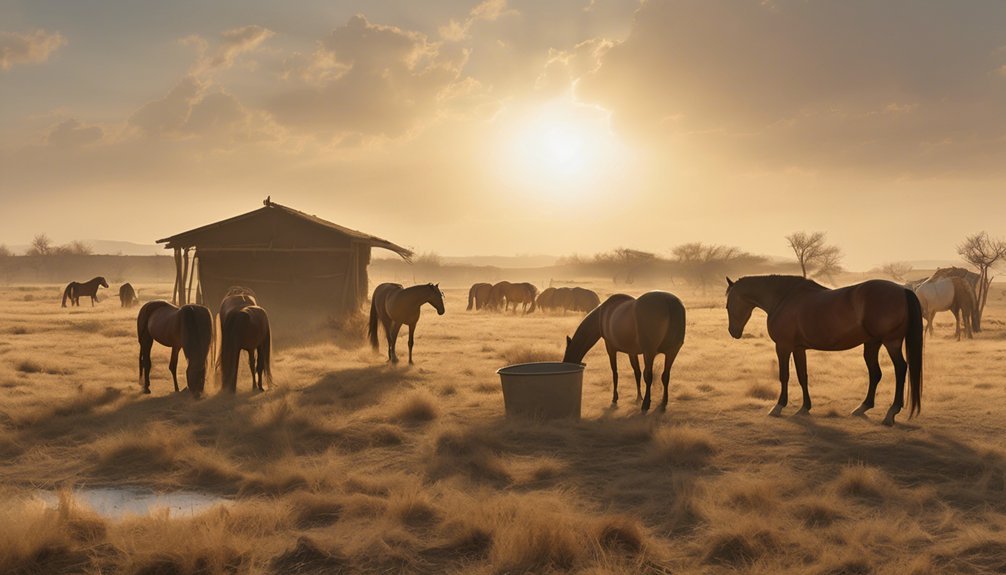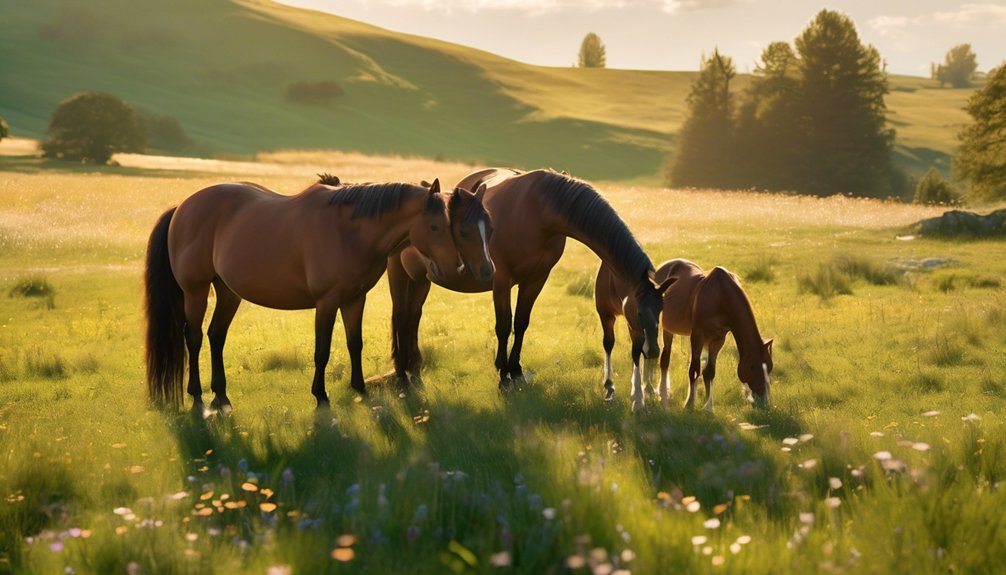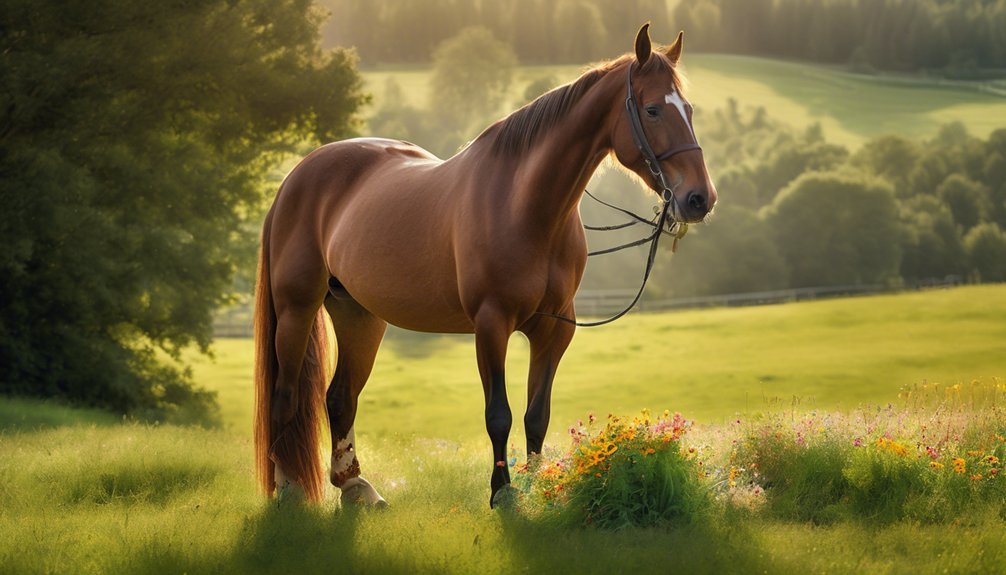
Imagine a race car fueled just moments before hitting the track; timing can make all the difference. When it comes to feeding your horse, the timing of meals in relation to exercise is equally crucial. Should you nourish your equine athlete before or after their workout? Each option carries potential benefits and risks that can impact performance and recovery. Understanding these factors is key to making informed decisions about your horse's nutrition strategy.
Key Takeaways
- Feeding before exercise boosts energy levels and supports muscle function during workouts.
- Timed feeding is crucial; too close to exercise may cause gastric issues like colic.
- Post-exercise feeding aids recovery by replenishing lost energy and nutrients.
- Allow cooling time after exercise before feeding to prevent digestive complications.
- Focus on easily digestible feeds to minimize discomfort and enhance performance.
Understanding Equine Digestion
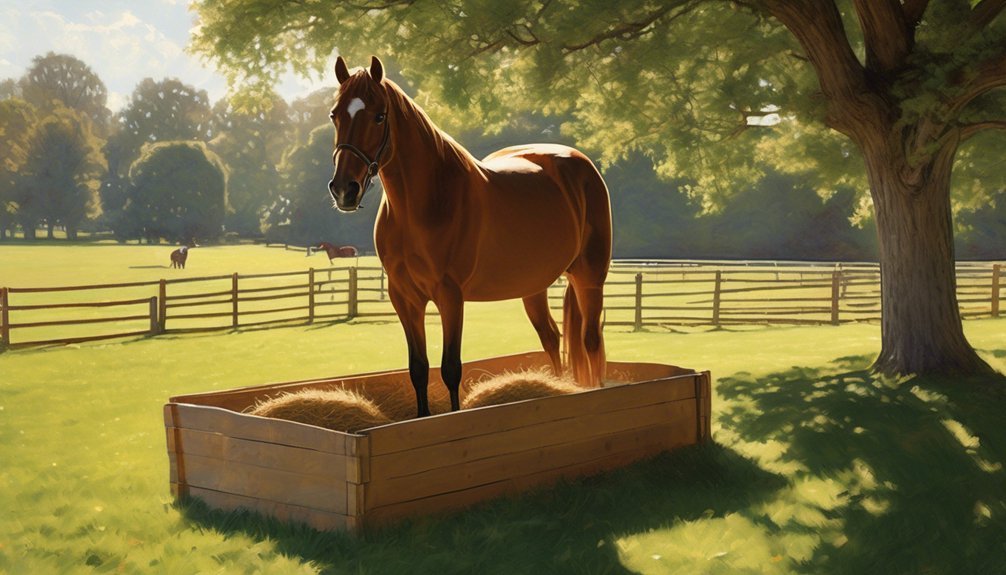
Understanding equine digestion is crucial for optimizing your horse's performance and overall health. The equine stomach is relatively small and designed for continuous grazing, meaning your horse's digestive process is unique.
When food enters the stomach, it mixes with gastric juices, breaking down nutrients before moving to the small intestine. Here, enzymes further aid digestion, allowing for nutrient absorption.
Unlike other animals, horses can't efficiently digest large meals; they thrive on smaller, frequent feedings. As you consider your horse's feeding schedule, remember that a well-understood digestive process can enhance energy levels, support recovery, and prevent colic.
Benefits of Feeding Before Exercise
Feeding your horse before exercise can significantly enhance performance and stamina. Proper pre-exercise nutrition plays a crucial role in energy management, ensuring your horse has the fuel it needs to perform optimally.
By providing the right nutrients beforehand, you can help your horse achieve its best.
- Boosts energy levels for sustained performance
- Supports muscle function and recovery during activity
- Reduces the risk of fatigue mid-exercise
When you prioritize feeding before workouts, you're setting your horse up for success.
It's essential to choose easily digestible feeds that provide quick energy without causing discomfort.
Risks of Feeding Before Exercise

While pre-exercise feeding can enhance performance, it also carries potential risks that horse owners should be aware of.
Feeding your horse too close to exercise can lead to gastric issues, such as colic or ulcers, as the stomach is unable to efficiently process food during physical exertion. The increased activity can also cause the digestive system to divert blood flow away from the stomach, impacting its ability to function properly.
This not only heightens the risk of gastrointestinal distress but can also negatively affect your horse's performance. By understanding these risks, you can make informed decisions that prioritize your horse's health and well-being while optimizing their performance during exercise.
Always consider timing and quantity when planning meals before riding.
Benefits of Feeding After Exercise
After exercise, providing your horse with a meal can significantly aid in recovery and replenish lost energy.
This practice helps ensure your horse receives essential nutrients and hydration, which are crucial for optimal recovery nutrition.
Consider these benefits:
- Replenished Glycogen Stores: After exertion, your horse needs carbohydrates to restore energy.
- Muscle Repair: Protein aids in repairing muscles, promoting strength and endurance.
- Hydration Importance: Offering water and electrolytes post-exercise prevents dehydration and supports overall health.
Risks of Feeding After Exercise
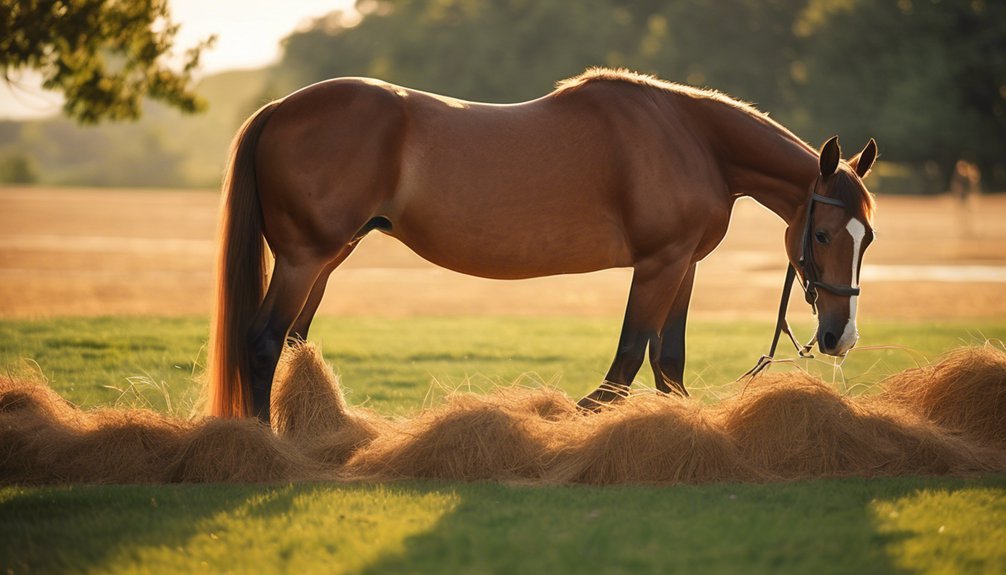
Although feeding your horse after exercise can support recovery, it's crucial to consider the potential risks involved. One significant concern is that post exercise digestion can be compromised if your horse is fed too soon.
After intense activity, blood flow is redirected to the muscles, making digestion less efficient. Feeding immediately after exercise may lead to colic or other digestive issues due to this decreased blood flow.
Moreover, improper feeding timings can result in an imbalance in nutrient absorption, adversely affecting recovery. Allowing your horse some time to cool down before feeding can mitigate these risks.
Factors to Consider for Your Horse
When considering how to feed your horse around exercise times, several important factors come into play.
Your horse's needs can vary significantly based on:
- Exercise intensity: Higher intensity workouts may require different feeding schedules and amounts to maintain energy levels.
- Horse age: Younger horses often need more frequent feedings for growth and energy, while older horses may have different nutritional requirements.
- Digestive health: A healthy gut is crucial, so consider how feeding times can impact digestion, especially around exercise.
Recommendations From Experts
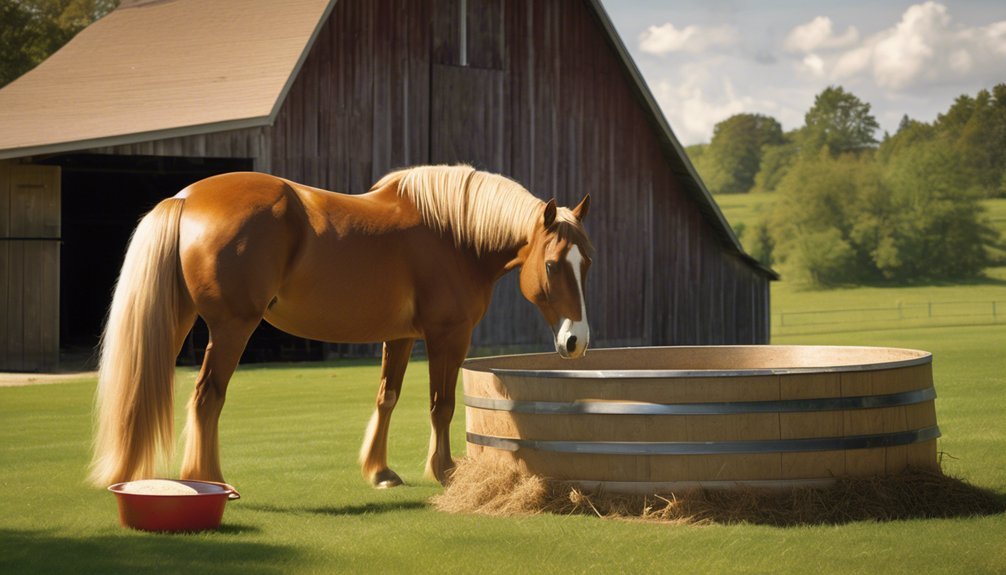
Experts recommend a strategic approach to feeding your horse around exercise times to optimize performance and health.
According to expert opinions, feeding your horse a small, easily digestible meal about one to two hours before exercise can provide the necessary energy without causing discomfort.
Post-exercise, it's essential to wait at least 30 minutes before offering a meal, allowing your horse to cool down and recover.
Nutrition guidelines suggest focusing on high-quality forage and balanced concentrates tailored to your horse's specific needs.
Monitoring your horse's condition and performance can help you adjust feeding times and portions effectively.
Frequently Asked Questions
How Long Should I Wait After Feeding Before Exercising My Horse?
After feeding, you should wait at least one to two hours for proper digestion duration. This pre-exercise timing helps prevent discomfort and ensures your horse can perform at its best during exercise.
Can I Feed My Horse a Snack During Exercise?
You can give your horse a snack during exercise, but timing's crucial for exercise safety. Opt for easily digestible treats, ensuring they don't disrupt your horse's focus or performance while keeping energy levels stable.
What Types of Feed Are Best for Pre-Exercise Nutrition?
Isn't it ironic how the right pre-exercise nutrition can make all the difference? For optimal performance, you'll want quality pre-exercise hay alongside easily digestible grain types, ensuring your horse feels energized and ready to go.
Should I Adjust Feeding Based on the Type of Exercise?
Yes, you should adjust feeding based on exercise intensity and feeding frequency. Higher intensity workouts may require more frequent, smaller meals to optimize energy levels, while lighter activities can adhere to a standard feeding schedule.
How Does My Horse's Age Affect Feeding Timing?
When considering your horse's age, young horses often require more frequent feeding to support growth, while senior horses may need smaller, more digestible meals. Adjusting feeding timing can promote better health and performance for both stages.
Conclusion
In the delicate dance of equine nutrition, timing is everything. By carefully balancing when you feed your horse, you can fuel their body and nurture their spirit, ensuring they perform at their best. Remember, just as you wouldn't rush a fine meal, give your horse the time they need to digest before and after exercise. With thoughtful attention to their individual needs, you can help your horse thrive, transforming every ride into a harmonious journey.



